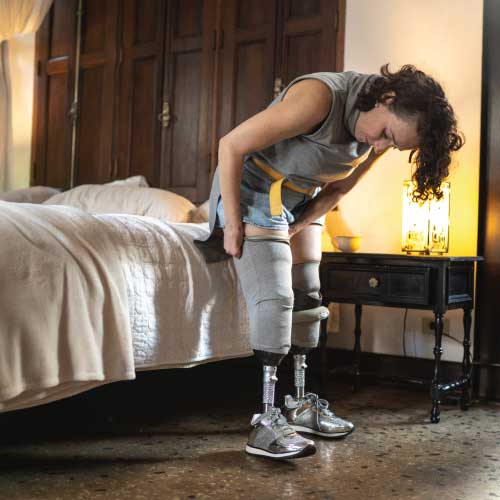A Prosthetic Leg Connects to Nerves, Feels Like A Biological Leg
A prosthetic limb that can connect directly to the user's nervous system can create a new level of functionality and sensation that was once thought impossible. An innovation like this can usher in a massive shift towards creating prosthetic limbs that feel just like a part of the body, mimicking the natural movements of organic limbs.

Many prosthetic users are forced to abandon their prosthetic limbs due to poor mobility when using them. But researchers may soon be able to reverse that.
A few years ago, a research team, led by Stanisa Raspopovic from the Swiss Federal Institute of Technology in Zurich, modified a commercially available prosthetic leg by integrating sensors into an insole located on the prosthetic foot and within the prosthetic knee. Electrical signals were transmitted from these areas through small electrodes implanted into the nerves of the study participants' thighs.
As soon as the foot makes contact with the ground or the knee flexes, signals are sent through the nerves to the brain. This enables a person to make quick and precise adjustments while walking.
According to the study, two participants experienced reduced fatigue and phantom limb pain after using the prosthetic leg. Moreover, the modified leg with sensors enabled them to move faster on an outdoor track than when the sensors were not in use.
In another part of the study, the participants were blindfolded to test their ability to walk on the prosthetic leg. The results showed that the modified prosthetic leg enabled the participants to identify which part of their foot was being touched with a 90% accuracy rate.
Next, the researchers instructed the participants to use the prosthetic leg and climb stairs, as well as walk over unseen obstacles. The researchers discovered that the participants could climb stairs faster by 30% when the sensors were turned on. Additionally, the participants were up to seven times more likely to trip over an unseen object without the help of the sensors.
Through the sensors, the study participants regained a certain level of mobility and function that they might have previously thought lost forever.
Although technology has been rapidly advancing, some limitations exist, such as the need for individual calibration, which can take time, patience, and expertise. Additionally, these types of prosthetic limbs may be costly, so they may not be accessible to all prosthetic users.
Nevertheless, the progress made in prosthetic technology is a remarkable feat. It signifies a move towards innovation that can better understand the complexities of the human nervous system, which can significantly improve the quality of life of prosthetic users. As researchers continue exploring the various possibilities, we hope to see a world with better prosthetic solutions.











































































